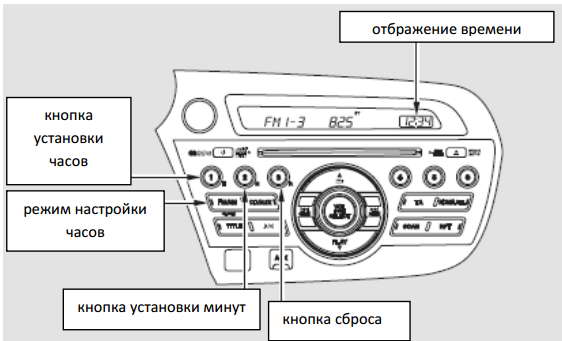
How to adjust the time on the car
Content
Ignition timing refers to the ignition system that allows the spark plug to fire or ignite a few degrees before the piston reaches top dead center (TDC) on the compression stroke. In other words, ignition timing is the adjustment of the spark produced by the spark plugs in the ignition system.
As the piston moves to the top of the combustion chamber, the valves close and allow the engine to compress the mixture of air and fuel inside the combustion chamber. The task of the ignition system is to ignite this air/fuel mixture to produce a controlled explosion that allows the engine to spin and generate energy that can be used to propel your car. Ignition timing or spark is measured in degrees in which the crankshaft rotates to bring the piston to the top of the combustion chamber, or TDC.
If the spark occurs before the piston reaches the top of the combustion chamber, also known as timing advance, the controlled explosion will work against the engine's rotation and produce less power. If a spark occurs after the piston starts to move back into the cylinder, which is called timing lag, the pressure created by compressing the air-fuel mixture dissipates and causes a small explosion, preventing the engine from developing maximum power.
A good indicator that ignition timing may need to be adjusted is if the engine is running too lean (too much air, not enough fuel in the fuel mixture) or too rich (too much fuel and not enough air in the fuel mixture). These conditions sometimes show up as engine kickback or ping when accelerating.
Proper ignition timing will allow the engine to produce maximum power efficiently. The number of degrees varies by manufacturer, so it's best to check your specific vehicle's service manual to determine exactly what degree to set the ignition timing to.
Part 1 of 3: Determining Timestamps
Necessary materials
- wrench of suitable size
- Free Repair Manuals Autozone provides free online repair manuals for specific makes and models of Autozone.
- Repair manuals (optional) Chilton
Older cars with a distributor ignition system have the ability to fine-tune the ignition timing. As a general rule, the timing needs to be adjusted due to normal wear and tear of the moving parts in the ignition system. One degree may not be noticeable at idle, but at higher speeds it can cause the car's ignition system to fire a little sooner or later, reducing overall engine performance.
If your vehicle uses a distributorless ignition system, such as a coil-on-plug, the timing cannot be adjusted because the computer makes these changes on the fly when needed.
Step 1 Locate the crankshaft pulley.. With the engine off, open the hood and locate the crankshaft pulley.
There will be a mark on the crankshaft pulley along with a degree mark on the timing cover.
- Functions: These marks can be observed with the engine running by illuminating this area with a timing lamp to check and adjust the ignition timing.
Step 2: Find cylinder number one. Most time indicators will have three clips.
The positive/red and negative/black clamps connect to the car's battery, and the third clamp, also known as the inductive clamp, clamps the spark plug wire of cylinder number one.
- FunctionsA: If you don't know which cylinder is #1, refer to factory repair information for ignition order information.
Step 3: Loosen the adjusting nut on the distributor.. If ignition timing needs to be adjusted, loosen this nut just enough to allow the distributor to rotate to advance or retard ignition timing.
Part 2 of 3: Determining the Need for Adjustment
Necessary materials
- wrench of suitable size
- Free Repair Manuals Autozone provides free online repair manuals for specific makes and models of Autozone.
- Repair manuals (optional) Chilton
- Indicator light
Step 1: Warm up the engine. Start the engine and let it warm up to operating temperature of 195 degrees.
This is indicated by the readings of the arrow of the temperature gauge in the middle of the gauge.
Step 2: Attach the time indicator. Now is the time to attach the timing light to the battery and number one spark plug and shine the timing light on the crankshaft pulley.
Compare your readings with the manufacturer's specifications in the factory repair manual. If the timing is out of specification, you will need to adjust it to keep the engine running at peak performance.
- Functions: If your vehicle is equipped with vacuum ignition advance, disconnect the vacuum line going to the distributor and plug the line with a small bolt to prevent vacuum leakage during ignition advance adjustment.
Part 3 of 3: Making adjustments
Necessary materials
- wrench of suitable size
- Free Repair Manuals Autozone provides free online repair manuals for specific makes and models of Autozone.
- Repair manuals (optional) Chilton
- Indicator light
Step 1: Loosen the adjusting nut or bolt. Go back to the adjusting nut or bolt on the distributor and loosen just enough to allow the distributor to rotate.
- FunctionsA: Some vehicles require a jumper on the electrical connector to short or disconnect the connection to the vehicle's computer so that the timing can be adjusted. If your vehicle has a computer, failure to follow this step will prevent the computer from accepting the settings.
Step 2: Rotate the distributor. Using the timing indicator to look at the timing marks on the crank and timing cover, turn the distributor to make the necessary adjustments.
- Attention: Each vehicle may vary, but a general rule of thumb is that if the rotor inside the distributor rotates clockwise while the engine is running, rotating the distributor counterclockwise will shift the ignition timing. Rotating the distributor clockwise will have the opposite effect and delay the ignition timing. With a firm gloved hand, turn the distributor slightly in either direction until the time is within manufacturer's specifications.
Step 3: Tighten the adjusting nut. After installing the timing at idle, tighten the adjusting nut on the distributor.
Ask a friend to step on the gas pedal. This involves quickly depressing the accelerator pedal to increase engine speed and then releasing it, allowing the engine to return to idle, thereby confirming that the timing is set to specifications.
Congratulations! You have just set your own ignition timing. In some cases, the ignition timing will be out of specification due to a stretched chain or timing belt. If, after setting the timing, the car shows symptoms of out of sync, it is recommended to contact a certified mechanic, for example, from AvtoTachki, for further diagnosis. These professional technicians can set the ignition timing for you and make sure your spark plugs are up to date.

